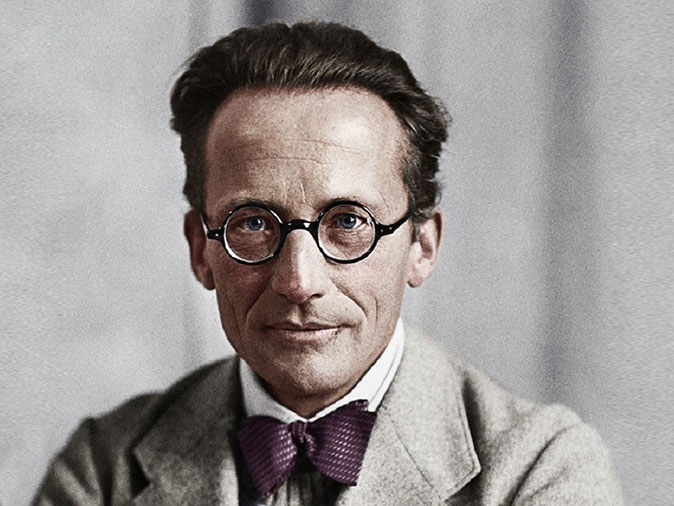|
Audio: Listen to this post | © ClassicBooks.com
|
Erwin Schrödinger was a respected Austrian physicist who made significant contributions to quantum mechanics and wave theory of matter. Thanks to his works, he was awarded the 1933 Nobel Prize for Physics alongside Paul Dirac, a British physicist. His contribution to the field of quantum theory, particularly the Schrödinger equation, provided a way in which wave function could be calculated and the dynamic changes it undergoes in time. He also authored books in different fields in physics, including cosmology, general relativity, electrodynamics, physics of dielectrics, color theory, statistical mechanics, and thermodynamics. He also worked towards a unified field theory. What is Life? remains one of his most popular books.
Personal life
Erwin Schrödinger was born on 12 August 1887 in Erdberg, Vienna, Austria, to renowned scientists. His father Rudolf Schrödinger was a botanist while his mother Georgine Emilia Brenda Schrödinger was a professor of chemistry. Schrodinger did not have any siblings. He was raised in a Christian family but often regarded himself as an atheist. However, the physicist was strongly attracted to pantheism and Eastern religions.
As a youth, Schrödinger developed a strong liking for color theory. He read extensively Arthur Schopenhauer’s works, getting absorbed in his line of thought and philosophy. In his lecture “Mind and Matter”, Schrödinger is found quoting Schopenhauer’s argument that the world extended in space and time is just our representation.
Career life and correspondence
Between 1914 and 1918, Schrödinger was involved in World War I as a commissioned officer. In 1920, he was assigned to assist Max Wien and in September 1920, he attained the title of a Professor. He then found work at the University of Zürich and in 1927, Schrödinger took over Max Planck at Friedrich Wilhelm University. He stayed for about 7 years before deciding on leaving Germany in 1934 due to his dislike for the Nazis and their ways.
In the same year, he lectured at Princeton University where he was offered a permanent position but declined. He was hoping for a position at the University of Edinburgh but failed to get it due to Visa delays. Eventually, he took a position at the University of Graz in Austria in 1936.
In 1935, Schrödinger had extensively corresponded with Albert Einstein, resulting in what is known as Schrödinger’s cat thought experiment. He is also known to have explored the works of Niels Bohr and Arnold Sommerfeld on quantum theory in the early stages of his career.
Works
Schrödinger published one of his important books What Is Life, in 1944. This book contains an intense discussion on the concept of the molecule and genetic code for living things. James Watson wrote that Schrödinger’s work was one of his main inspiration to research the gene.
The alma mater of the University of Vienna also published a paper on wave mechanics in which he described what is known as the Schrödinger equation. In the paper Quantization as an Eigen value Problem, he provided a means for deriving wave equation for systems that operated based on time. This paper is globally recognized as one of the most important discoveries of the 20th century. This work elicited two publications. One solved problems of diatomic molecule, rigid rotor, and quantum harmonic oscillator. The other was focused on showing Schrödinger‘s approach to that of Werner Heisenberg.
Schrödinger returned to Vienna in 1956 after retiring at Dublin. He gave an important lecture at the World Energy Conference but chose not to talk about nuclear energy due to his skepticism. After working for decades, he resorted to enjoying life with his wife Annemarie Bertel.








